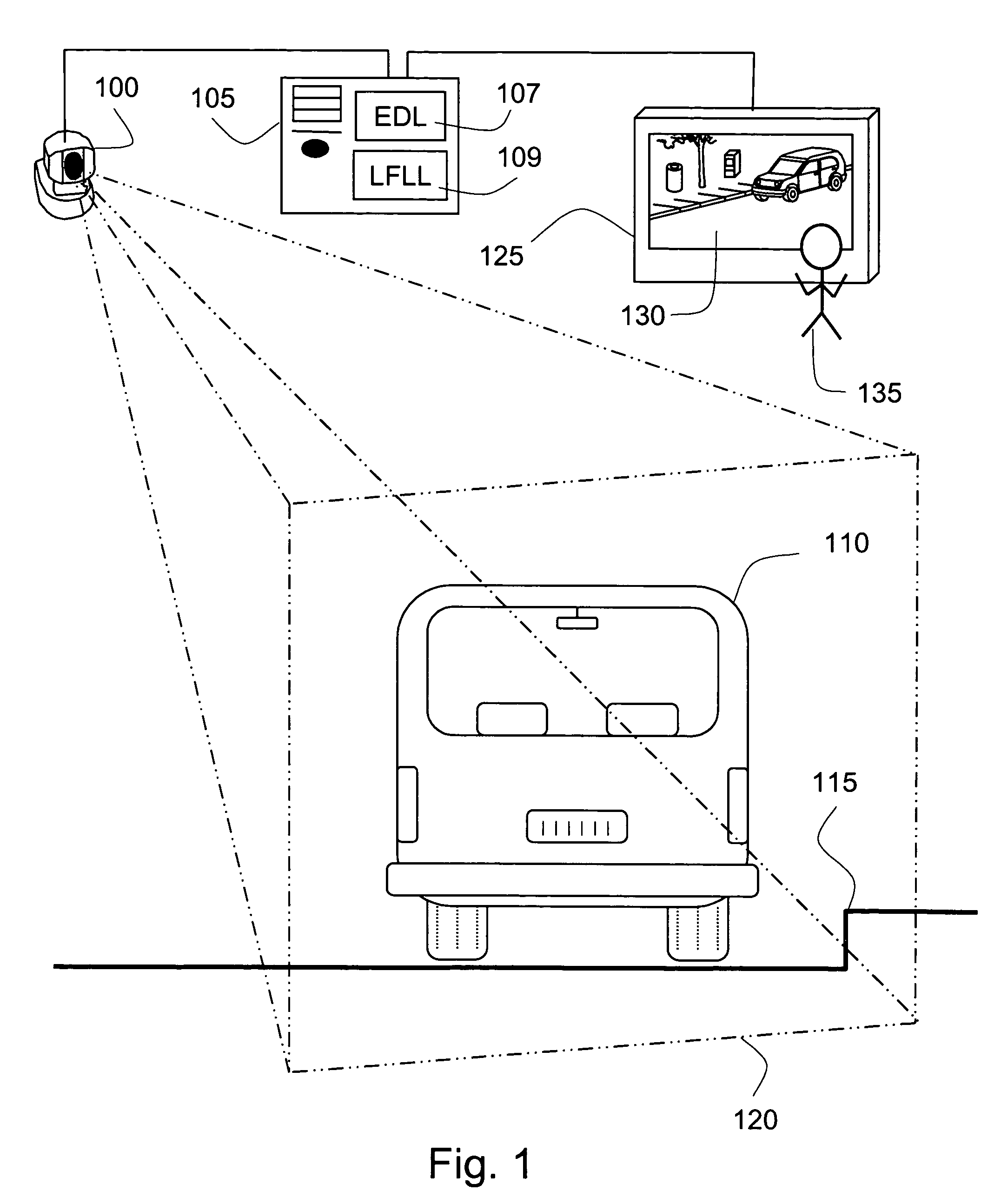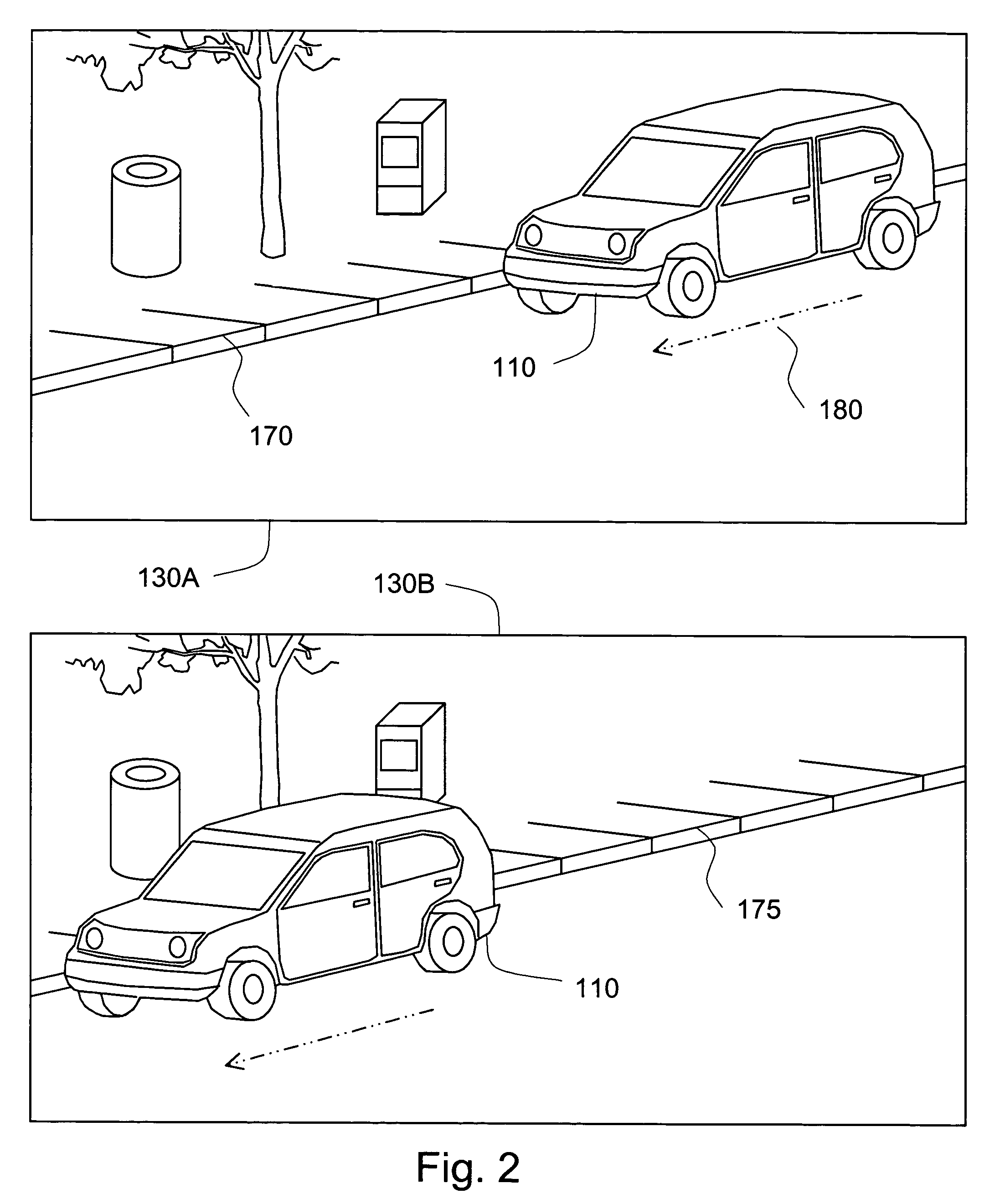Method and system for event detection by analysis of linear feature occlusion
- Summary
- Abstract
- Description
- Claims
- Application Information
AI Technical Summary
Problems solved by technology
Method used
Image
Examples
Embodiment Construction
[0045]Two embodiments are described which exemplify the method and apparatus for event detection using linear features. These two embodiments demonstrate useful applications on the invention. The invention roughly consists of image capture, linear feature definition, event definition and event detection. The term “linear feature” would refer not only to straight lines but also to curvilinear features.
[0046]FIG. 1 shows the setup of the first exemplary embodiment of the invention. A static image-capturing device 100 captures images of a view 120 of a scene. The images are processed by an attached computer 105. In the computer's memory are two lists—the Linear Features Location List (LFLL) 109 and the Event Definition List (EDL) 107. An image display device called a “monitor-input”125, attached to the computer, displays images 130 of the events happening in the scene. The monitor-input 125 has input capabilities where a user 135 can select or mark points on the displayed image 130. Us...
PUM
 Login to View More
Login to View More Abstract
Description
Claims
Application Information
 Login to View More
Login to View More - R&D
- Intellectual Property
- Life Sciences
- Materials
- Tech Scout
- Unparalleled Data Quality
- Higher Quality Content
- 60% Fewer Hallucinations
Browse by: Latest US Patents, China's latest patents, Technical Efficacy Thesaurus, Application Domain, Technology Topic, Popular Technical Reports.
© 2025 PatSnap. All rights reserved.Legal|Privacy policy|Modern Slavery Act Transparency Statement|Sitemap|About US| Contact US: help@patsnap.com



